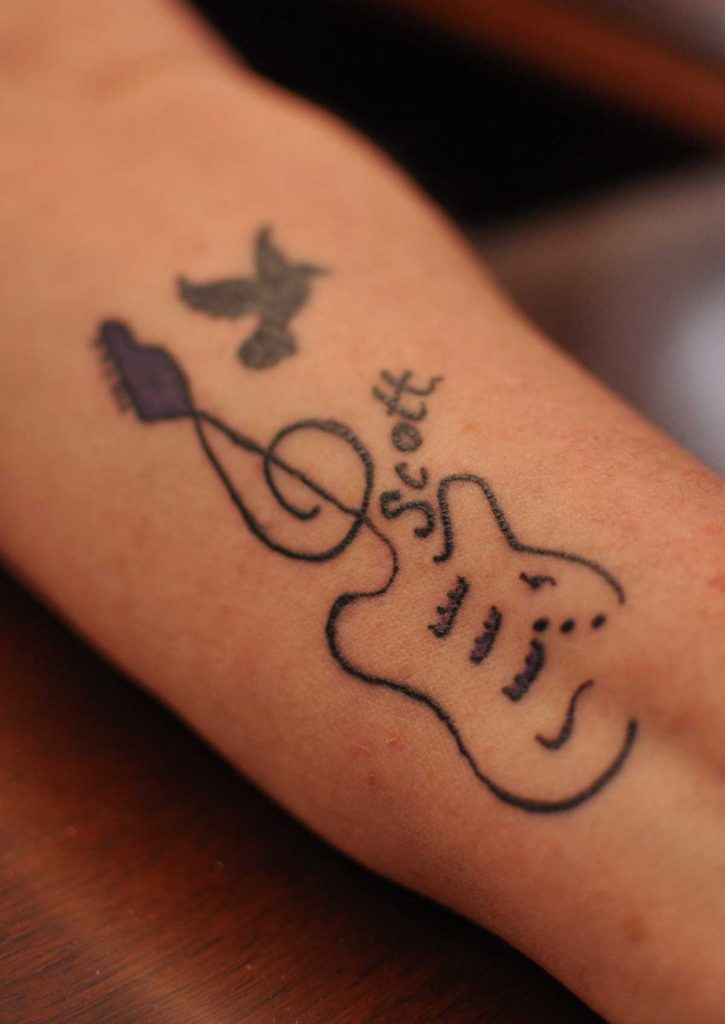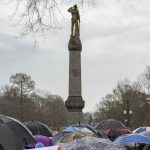As secession fever swept the Slave South, young white men joined state militias en masse. By May 1861, only four months after Mississippi leaders declared secession, almost every student enrolled at the University of Mississippi had enlisted with the Confederate Army.
Fifty-five students joined the “University Greys.” Seventeen enlisted with the “Lamar Rifles,” a Lafayette County militia. Others volunteered with various state regiments.
Many did not survive the Civil War.
Almost half a century later, on May 10, 1906, hundreds congregated on the University of Mississippi campus, where white women of the United Daughters of the Confederacy unveiled a statue honoring fallen Confederate soldiers, “the heroes of Lafayette County who made glorious many a battlefield.” Though not formally dedicated to UM student-soldiers, Civil War historian Don H. Doyle wrote that the statue was “a special tribute to the University Greys who had fallen in Pickett’s Charge at Gettysburg” in his book, “Faulkner’s County: The Historical Roots of Yoknapatawpha.”
Charles Scott, a former Confederate cavalryman and future gubernatorial candidate (his political platform sought “the preservation and maintenance of civilization and white supremacy in the south”), addressed the crowd.
“The Southern soldier, whether officer or private, fought neither for gold nor other gain,” Scott declared, but “battled for a principle, in which each believed with all his heart, soul, and mind.” Jeffrey Jackson, an associate professor of sociology at the University of Mississippi and co-chair of the UM Slavery Group, said this is a “sincere fiction.”
This week, Jackson and another UM Slavery Group member, Anne Twitty, an associate professor of history, will present a collaborative study at the “Universities, Slavery, Public Memory & the Built Landscape” symposium at the University of Virginia.
His still unpublished findings, supported by Twitty’s research on enslaved people owned by UM students between 1848 and 1850, suggest student-soldiers from the University of Mississippi fought not “for a principle,” as former Confederates claimed and neo-Confederates continue to claim, but for the preservation of the peculiar institution.
The University Greys, Jackson says, were “overwhelmingly slaveholders, the children of slaveholders. In fact, their slaveholdings were much larger than the average Mississippi slaveholder.”
“Of the 55 university students who became a part of the University Greys, 48 came from slaveholding families, and every one of the 17 students enlisted with the Lamar Rifles came from slaveholding families.” Some owned more than 100 slaves: A University Grey student-soldier claimed 101 family-owned slaves, and the family of one Lamar Rifle enlistee owned 132 slaves.
According to Jackson, the average Mississippi slaveholder in 1860 owned around nine slaves.
The average number of slaves owned by the family of a University Grey student-soldier? About 30.
Jackson contends that estimates — informed by historical documents, census reports and slave catalogues — show that “students were coming from families that were becoming extremely rich extremely quickly due to slave labor. If you think about their motivations (for enlisting), these students were aware of the threat an abolitionist federal government would’ve had on their economic holdings, on their inheritance.”
Contemporary critics argue that the continued maintenance of a Confederate monument constitutes a public attack against black and brown students and glorifies a white supremacist Slave South. Its defenders claim it is a war memorial, a remembrance of those young white men “who made glorious many a battlefield,” a sacred shrine of Southern heritage.
Our administration compromised, constructed a contextualizing plaque — originally omitting any mention of slavery — and claimed the ordeal an “education opportunity.”
Now, only a month after an alleged drunk driver rammed the Confederate monument, destroying the plaque but only damaging the statue, we, the “Ole Miss family,” must again confront our Confederate ghost.
Our administration, in all its wisdom, employed our Facilities Management Department and spent more than $10,000 in private funds repairing a Confederate monument and its plaque, completing a projected two-week process within three days.
That is more than $10,000 in private funds spent not on financing scholarships, renovating buildings or enhancing faculty development, but on reviving a racist relic.
Jackson and Twitty’s research regarding UM students’ slaveholdings only confirms a shameful truth long denied.
Our Ole Miss Confederate monument is no “education opportunity.” It is a symbol of white supremacy, a memorial of soldiers willing to sacrifice life and limb to preserve Southern slavery.
Our administration may no longer overlook the sinful stain of our slave past. We must reclaim our Circle and our campus.
We must demand our administration relocate the Confederate memorial.
Allen Coon is a senior African-American studies and public policy leadership double major from Petal.















